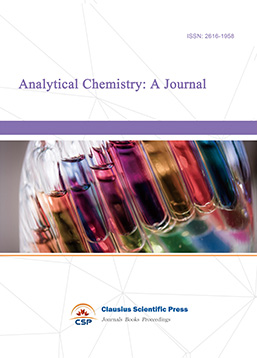Study on the Influence Law of Rubber Blending on the Wear Resistance of Tread Rubber
DOI: 10.23977/jmpd.2024.080112 | Downloads: 29 | Views: 1225
Author(s)
Chunyu Mao 1, Xirui Sun 1, Feng Liu 1, Guangwen Zhou 1
Affiliation(s)
1 School of Mechanical and Automotive Engineering, Jilin Engineering Normal University, Changchun, Jilin, China
Corresponding Author
Chunyu MaoABSTRACT
The wear resistance of tire tread rubber is an important indicator for evaluating tire performance. In response to the need for improving the wear resistance of tire tread rubber, this study investigated the influence of blending ratios of natural rubber (NR), styrene-butadiene rubber (SBR1502E), and polybutadiene rubber (BR9000) on the properties of tread rubber. Experimental results showed that in terms of vulcanization characteristics, elongation at break, and hardness, BR had the longest vulcanization time, NR had the highest elongation at break, and BR had the greatest hardness. After blending the rubbers, their properties fell between the two types of rubber and varied with the content. In terms of tensile strength, NR performed the best, while BR was weaker. However, when NR/BR and NR/SBR were blended in a ratio of 80/20, the tensile strength was significantly improved. In terms of wear resistance, BR performed the best, while SBR was weaker. However, when SBR/NR was blended, especially at ratios of 40/60 and 60/40, the wear resistance was significantly improved, with less wear than single rubber. This study not only revealed the influence pattern of different rubber blending ratios on the wear resistance of tread rubber, but also provided new ideas for the tire industry to improve wear resistance, reduce pollution, and extend service life.
KEYWORDS
Tread Rubber, Wear Resistance, Tensile Strength, Elongation at Break, Shore HardnessCITE THIS PAPER
Chunyu Mao, Xirui Sun, Feng Liu, Guangwen Zhou, Study on the Influence Law of Rubber Blending on the Wear Resistance of Tread Rubber. Journal of Materials, Processing and Design (2024) Vol. 8: 97-106. DOI: http://dx.doi.org/10.23977/jmpd.2024.080112.
REFERENCES
[1] Bandyopadhyay S, Agrawal S L, Ameta R, et al. An overview of rubber recycling[J]. Progress in Rubber Plastics and Recycling Technology, 2008, 24(2): 73-112.
[2] Councell T B, Duckenfield K U, Landa E R, et al. Tire-wear particles as a source of zinc to the environment[J]. Environmental science & technology, 2004, 38(15): 4206-4214.
[3] Singh T, Patnaik A. Performance Assessment of Lapinus–aramid Based Brake Pad Hybrid Phenolic Composites in Friction Braking [J]. Archives of Civil and Mechanical Engineering, 2015, 15(1): 151-161.
[4] Wang M J, Zhang P, Mahmud K. Carbon-silica dual phase filler, a new generation reinforcing agent for rubber: Part IX. Application to truck tire tread compound[J]. Rubber chemistry and technology, 2001, 74(1): 124-137.
[5] Jin K K, Lee S H. New technology of crumb rubber compounding for recycling of waste tires[J]. Journal of Applied Polymer Science, 2015, 78(8):1573-1577.
[6] Kienle R N, Dizon E S, Brett T J, et al. Tread wear and wet skid resistance of butadiene-styrene elastomers and blends[J]. Rubber Chemistry and Technology, 1971, 44(4): 996-1014.
[7] Pongdhorn S O , Krisda S , Chakrit S , et al. Effects of Blend Ratio and SBR Type on Properties of Carbon Black-Filled and Silica-Filled SBR/BR Tire Tread Compounds[J]. Advances in Materials ence and Engineering, 2017, 2017:1-8.
[8] Shin W S, Yong R K, JS Kim, et al. Improved Silica Dispersibility in Silica-rubber Compounds for a Tire Tread by Using an Itaconic Acid-based Polymeric Dispersant[J]. Fibers and Polymers, 2021, 22(1).
[9] Ganter M, Gronski W, Reichert P, et al. Rubber nanocomposites: morphology and mechanical properties of BR and SBR vulcanizates reinforced by organophilic layered silicates[J]. Rubber Chemistry and Technology, 2001, 74(2): 221-235.
[10] Shin C H, Kim D S. Effects of rubber type on the curing and physical properties of silica filled rubber compounds [J]. Polymers for Advanced Technologies, 2008, 19(8): 1062-1068.
| Downloads: | 4087 |
|---|---|
| Visits: | 253368 |
Sponsors, Associates, and Links
-
Forging and Forming

-
Composites and Nano Engineering

-
Metallic foams

-
Smart Structures, Materials and Systems

-
Chemistry and Physics of Polymers

-
Analytical Chemistry: A Journal

-
Modern Physical Chemistry Research

-
Inorganic Chemistry: A Journal

-
Organic Chemistry: A Journal

-
Progress in Materials Chemistry and Physics

-
Transactions on Industrial Catalysis

-
Fuels and Combustion

-
Casting, Welding and Solidification

-
Journal of Membrane Technology

-
Journal of Heat Treatment and Surface Engineering

-
Trends in Biochemical Engineering

-
Ceramic and Glass Technology

-
Transactions on Metals and Alloys

-
High Performance Structures and Materials

-
Rheology Letters

-
Plasticity Frontiers

-
Corrosion and Wear of Materials

-
Fluids, Heat and Mass Transfer

-
International Journal of Geochemistry

-
Diamond and Carbon Materials

-
Advances in Magnetism and Magnetic Materials

-
Advances in Fuel Cell

-
Journal of Biomaterials and Biomechanics


 Download as PDF
Download as PDF